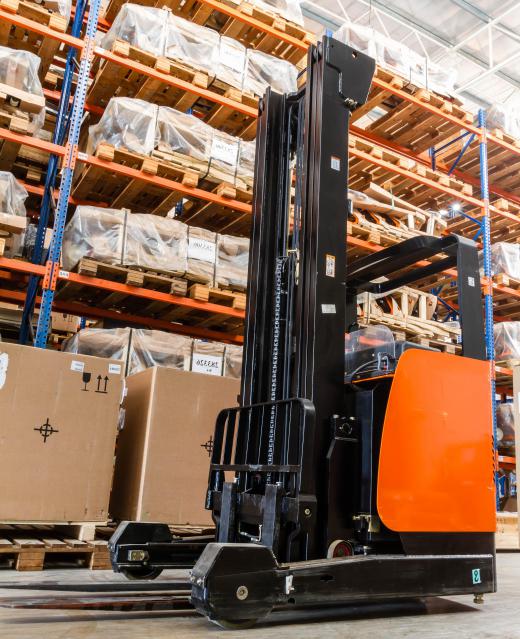Forklifts are classified according to a system devised by the Industrial Truck Association (ITA), an organization of forklift truck manufacturers and suppliers based in the North American countries of the United States, Canada, and Mexico. Around the rest of the world, these classes are generally recognized by other countries and international manufacturers, but they may not be strictly adhered to. The ITA classifies forklifts into eight classes, designated by Roman numerals, primarily according to engine type and chassis type. Some forklifts could fall into more than one of the forklift classes. In this case, however, they are usually arbitrarily assigned to one class.
Class one forklift trucks are forklift trucks that have a place for a seated rider, and are powered by electric motors. They may have solid tires or pneumatic tires. Solid tires are also called cushion tires. Pneumatic tires are air-filled like standard automobile tires. Class one forklifts are also counterbalanced with a counterweight for stability.

Electric motor, narrow aisle trucks make up the second of the forklift classes. These forklifts are similar to other forklift trucks but are designed to operate and maneuver in tight conditions and narrow aisles. Many trucks of this type have forklift assemblies that turn to one or both sides instead of being fixed facing forward.
The third of the forklift classes encompasses electric-motored hand trucks. Hand trucks are lift trucks that do not have a space for an operator to ride on the vehicle. Instead, the operator walks behind it. Vehicles in this class have standard forklift machinery.

Internal combustion engine vehicles are the defining feature of the fourth and fifth forklift classes. Vehicles with solid, or cushion, tires are grouped in class four, and vehicles with pneumatic tires are placed in class five. All forklifts in these classes are designed for a rider-operator.
Tow tractor lift trucks comprise class six. These vehicles may have electric motors or internal combustion engines. They are operated by a sitting rider and may have solid or pneumatic tires.

Class seven forklifts are vehicles classified as rough terrain forklift trucks. They are designed with over-sized pneumatic tires and are capable of operating on uneven or rough surfaces. Class seven forklifts may have electric motors or internal combustion engines and are all designed for a sitting operator.
The last of the eight forklift classes is made up of hand lifts, also known as pallet jacks. These lift vehicles are not intended to lift loads or pallets high off the ground or floor but rather to simply lift a pallet a few inches off the floor and support it while it is moved. These types of lifts are moved manually and must be pulled or pushed by the operator.
